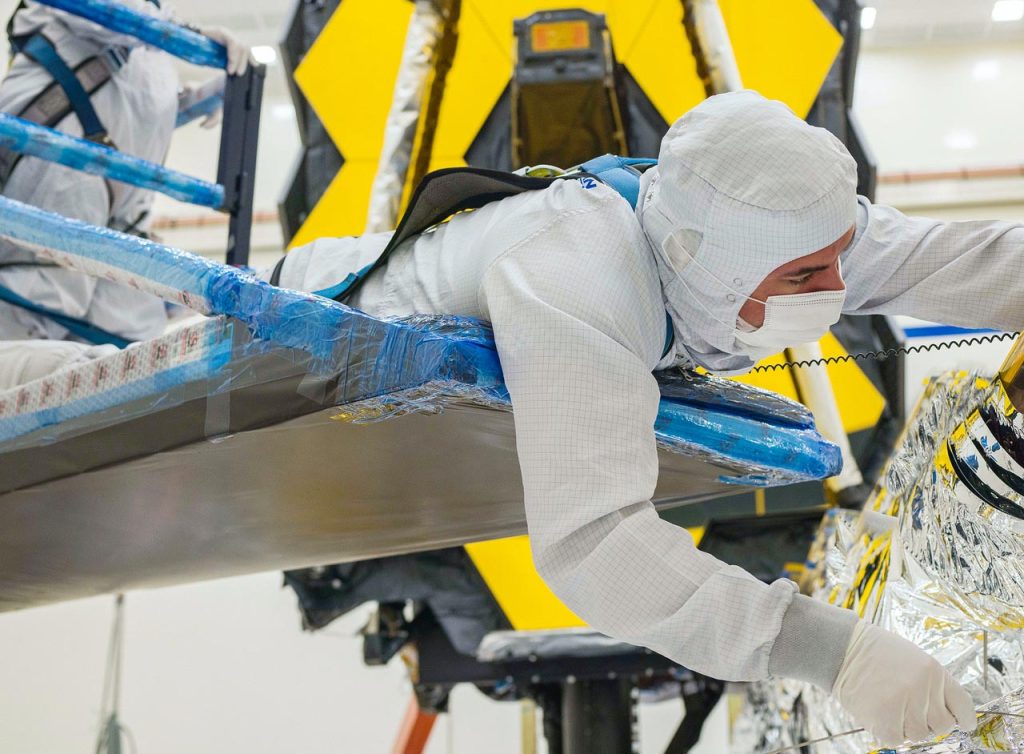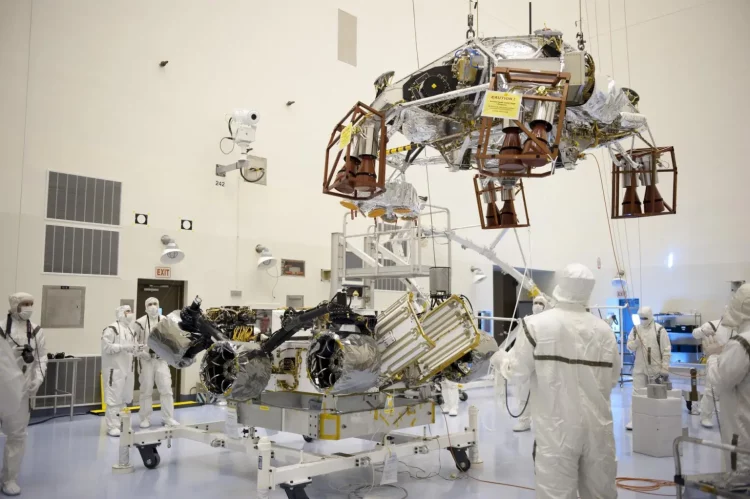Background Introduction
NASA’s Lunabotics Challenge is a globally recognized engineering competition aimed at inspiring and nurturing young engineers and scientists, advancing innovations in lunar exploration technology. Since its inception, this competition has not only showcased participants’ unique creativity in lunar exploration technology but also encouraged students and engineers worldwide to explore cutting-edge space technologies. The 2025 Lunabotics Challenge will continue this tradition, bringing more opportunities and challenges, further pushing human understanding of the Moon and its environment.
History and Evolution of the Challenge
Since its debut in 2010, the Lunabotics Challenge has become a major event in the aerospace field. Initially, the competition focused on fundamental applications of robotics technology, but as technology advanced and exploration goals expanded, the challenge’s tasks have become increasingly complex. The competition not only requires participants to design and build robots capable of operating on the Moon’s surface but also encourages them to explore advanced automation and artificial intelligence technologies to address future lunar exploration missions.
In recent years, the Lunabotics Challenge has seen numerous innovative designs and technological breakthroughs. For example, in the 2019 challenge, a team presented a robot called “LunaBot,” which not only featured autonomous navigation capabilities but also used built-in sensors to monitor soil characteristics in real-time. This technological breakthrough provided new insights into lunar exploration and laid a technical foundation for future missions.
Overview of the 2025 Challenge
The 2025 Lunabotics Challenge will introduce a series of new tasks and requirements aimed at further advancing robotics technology. Participants will be required to design and build a robotic system capable of operating in the Moon’s extreme environment. These robotic systems must feature the following core functionalities:
- Autonomous Navigation Capabilities: Given the complex and varied terrain of the Moon, robots must navigate autonomously in the absence of GPS signals. Teams need to develop advanced sensors and algorithms to ensure the robot can avoid obstacles and select the optimal path to complete tasks.
- Efficient Excavation Abilities: Lunar soil differs significantly from Earth soil, so robots must have excavation tools adapted to lunar soil characteristics. This includes designing efficient digging devices and technologies capable of handling various soil types.
- Material Handling and Transport: Robots need to handle and transport lunar soil samples efficiently. This involves collecting and storing samples, as well as transporting them to designated locations or other systems for further analysis.
- Durability: The Moon’s extreme conditions, including low temperatures, low gravity, and high radiation, necessitate highly durable and reliable robots. Teams must address how to maintain robot functionality under these conditions.
Technical Challenges
The 2025 Lunabotics Challenge will present several technical challenges that test participants’ engineering abilities and drive technological innovation and development. Key technical challenges include:
- Design and Materials: The extreme conditions on the Moon require robots to use special materials and designs to withstand low temperatures and radiation. For example, the robot’s outer shell needs excellent thermal insulation, and electronic components must be shielded from radiation.
- Energy Management: Due to the lack of an atmosphere on the Moon, solar radiation is very intense, and temperature extremes are severe. Robots need efficient energy management systems to operate reliably in both daytime and nighttime conditions.
- Communication and Data Transmission: Robots need to communicate with control centers on Earth in real time. However, signal transmission may be affected by lunar terrain, so reliable communication solutions must be developed to ensure stable and accurate data transmission.
- Reliability of Task Execution: Robots may face various unknown conditions on the Moon’s surface, so teams need to design highly reliable systems to ensure stable operation over long periods and avoid mission failures due to system malfunctions.
Opportunities for Participants
The Lunabotics Challenge provides valuable opportunities for participants to showcase their technical skills and receive professional feedback and advice. Teams will have the chance to interact directly with NASA scientists and engineers, assessing whether their designs and technologies meet real-world needs. Additionally, successful teams may receive further funding and support to continue developing their technologies and innovations.
- Education and Training: Participants will be exposed to advanced engineering technologies and design concepts during preparation. This experience will lay a solid foundation for their future careers by enhancing problem-solving skills and teamwork.
- Career Development: Team members who successfully participate in the challenge will gain industry recognition, which positively impacts their career development. Their achievements will become significant assets in job applications and professional advancement.
- Innovation Showcase: The Lunabotics Challenge offers a platform to showcase innovative technologies. Participants’ designs and solutions could become critical components of future lunar exploration missions, contributing to human exploration of the Moon and other celestial bodies.

Event Organization and Process
The 2025 Lunabotics Challenge will involve multiple stages, from initial applications to final evaluation and awards. Key steps of the competition include:
- Registration and Application: Interested teams must submit their applications within the designated registration period. This includes submitting design proposals, technical documents, and other necessary materials. Applicants need to detail their design ideas, technical implementation, and anticipated challenges.
- Preliminary Review: The review team will conduct an initial assessment of all applications, focusing on innovation, technical feasibility, and design quality. Teams that pass the preliminary review will be invited to participate in actual testing and evaluation.
- Testing and Evaluation: During this phase, teams’ robots will undergo performance testing in simulated lunar environments. The review team will assess the robot’s excavation capabilities, autonomous navigation, and material handling performance.
- Final Review and Awards: After testing and evaluation, the winning teams will receive awards and additional support. Awardees will be invited to the awards ceremony and have the opportunity to engage in in-depth discussions with NASA scientists and engineers.
Impact on Future Space Missions
The Lunabotics Challenge is not just a technological competition but a significant effort to address future lunar and other space exploration missions. By driving technological innovation and engineering practice, the competition provides strong support for future lunar exploration efforts. The robotic systems and technological solutions designed by participants will lay the groundwork for future lunar missions, helping scientists better understand the Moon’s environment, explore its resources, and support future deep-space exploration missions.
- Resource Development: Lunar exploration missions will aid in developing resources on the Moon, such as water ice and rare minerals. These resources are crucial for scientific research and may play a key role in future space missions.
- Technological Advancements: The Lunabotics Challenge fosters advancements in robotics, automation, and artificial intelligence. These technological advancements will enhance future deep-space exploration missions, improving mission efficiency and success rates.
- International Collaboration: As lunar exploration progresses, international cooperation will become increasingly important. The Lunabotics Challenge, as a global event, promotes collaboration and exchange in aerospace technology, laying the foundation for future international exploration missions.
Conclusion
The 2025 Lunabotics Challenge presents an exciting opportunity and challenge for innovators worldwide. Through this platform, participants not only have the chance to achieve technical breakthroughs but also contribute significantly to human exploration of the Moon and its resources. We encourage all aspiring aerospace engineers and students to participate enthusiastically, embrace this challenge, and drive scientific and technological advancements, opening new chapters in lunar exploration.
By participating in the Lunabotics Challenge, participants will enhance their technical abilities and engineering experience, making a lasting impact on future space missions. We look forward to seeing more innovative and forward-thinking designs that provide new solutions for lunar exploration and beyond. The future of lunar exploration will rely not only on advanced technologies but also on global innovation and collaboration. The Lunabotics Challenge will continue to inspire and drive progress in these areas.


















































Discussion about this post